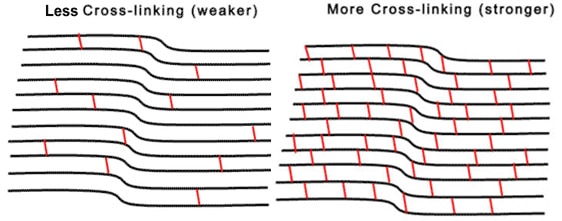What is CXL?
CXL, or corneal cross-linking, is an in-office eye procedure aimed at strengthening the cornea. CXL is often performed on patients with keratoconus or other corneal diseases, and sometimes on  patients with LASIK complications.
patients with LASIK complications.
How does it work?
CXL is a minimally-invasive procedure and reduces corneal ectasia caused by certain corneal diseases. Your CXL doctor will apply liquid riboflavin (vitamin B2) to the eye, followed by a controlled application of ultraviolet light.
There are two basic types of CXL:
- Epithelium-off CXL: During this procedure, the outermost layer of the cornea (the epithelium) will be removed. This allows the treatment to penetrate the cornea more quickly and deeply.
- Epithelium-on CXL: During this procedure, the epithelium is left intact. This means a longer treatment time but a shorter recovery time.
CXL is often combined with other keratoconus treatments, like Intacs. This combination has been helpful for those with severe keratoconus.
The Procedure
Before your procedure, you will need a preliminary eye examination. During this exam, your eye doctor will measure the thickness of your cornea and check your visual acuity and general eye health. This will help your doctor determine if you are a good candidate for CXL. The CXL procedure takes about 60 to 90 minutes, depending on the method.
During epithelial-off crosslinking, you will be placed in a reclining position and your surgeon will remove the epithelial layer of your eye. The riboflavin eye drops will then be applied to your cornea. The UV light is then applied for up to 30 minutes. When finished, a soft contact “bandage” will be placed in your eye while the epithelial layer grows back. If you are receiving epithelial-on crosslinking, you will be placed in a reclining position and the riboflavin drops will be placed. The UV light will be applied, and then the procedure is over.

The Recovery
You will be given topical antibiotics and anti-inflammatory eye drops. Studies have shown that CXL improves or stabilizes the condition of 99 percent of patients. CXL may cause some initial irritation, but the surface of the eye will recover within several weeks.
Interested in learning more about CXL? Call Anh Nguyen Ophthalmology to schedule your consultation for this revolutionary procedure!
Frequently Asked Questions
How long does it take to recover from cross linking?
Your recovery time depends on the type of cross-linking procedure that you undergo. You are likely to get functional vision within a week of your procedure, but your cornea will need time to adjust to the treatment over the course of a few weeks.
Is corneal collagen cross linking painful?
The procedure is not painful, and the eye is numbed throughout the process.
Is keratoconus hereditary?
Its possible that keratoconus symptoms are passed down from parents to children, but more needs to be understood about this disease before a stronger correlation can be drawn.
Does keratoconus get worse over time?
In some people, keratoconus reaches a state of equilibrium where it doesnt continue progressing, but others experience worsening symptoms at different rates. Whatever your experience with the disease, its important to have a comprehensive eye exam and diagnosis to determine the best course of treatment.
How do you prevent keratoconus?
Keratoconus is a genetic condition, but other factors such as rubbing your eyes often can increase your likelihood of developing keratoconus.
How fast does keratoconus progress?
The speed that keratoconus develops varies for different people, and usually progresses most rapidly during your thirties. The condition often develops over years, usually causing people to change vision correction prescriptions each year or so before an eye exam reveals their underlying issue.
Can keratoconus be cured permanently?
No, but crosslinking can stop the progression of keratoconus to prevent your sight from getting worse and help avoid the need for a corneal transplant in the future.
How successful is cross linking?
Cross linking succeeds in limiting the progression of keratoconus and improving the quality of vision in most patients.
Is cross-linking surgery painful?
No, your eyes will be numb during the procedure so you will not feel any pain. You may experience some discomfort after the surgery during the healing process.
Are you awake during cross linking?
Yes, and the crosslinking procedure is painless. You will have to be reclined for up to an hour and a half, but other than this, there is no discomfort during crosslinking.
Can I watch TV after cross linking?
Follow your ophthalmologists instructions for caring for your treated eyes after CXL. Most patients are free to resume their normal activities while using anti-inflammatory eye drops and antibiotics.
How painful is corneal corss-linking?
The actual corneal cross-linking procedure is not painful. However, there may be some discomfort during the healing period following the procedure, which will improve with time.
What is corneal cross-linking recovery like?
Following a cross-linking procedure, patients may experience sensitivity to light, a feeling as if something is in their eye, dry eyes, blurry vision, or mild eye discomfort. Vision will be blurry at first but will gradually improve within 2-3 weeks. Most people can return to normal activities within 1-2 weeks.
Is corneal cross-linking covered by insurance?
Corneal cross-linking may be covered by insurance depending on the type of procedure and the individual insurance plan. To learn more about insurance coverage, please reach out to your insurance provider.
 patients with LASIK complications.
patients with LASIK complications.



